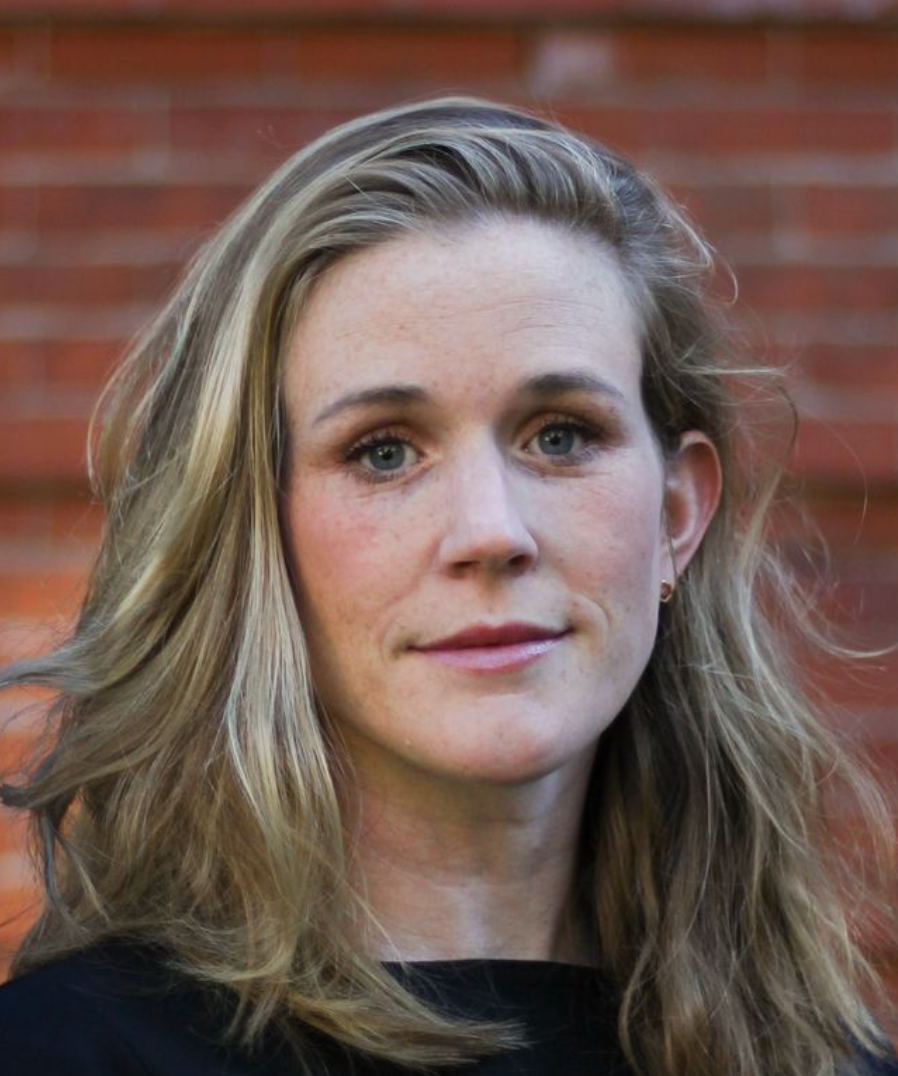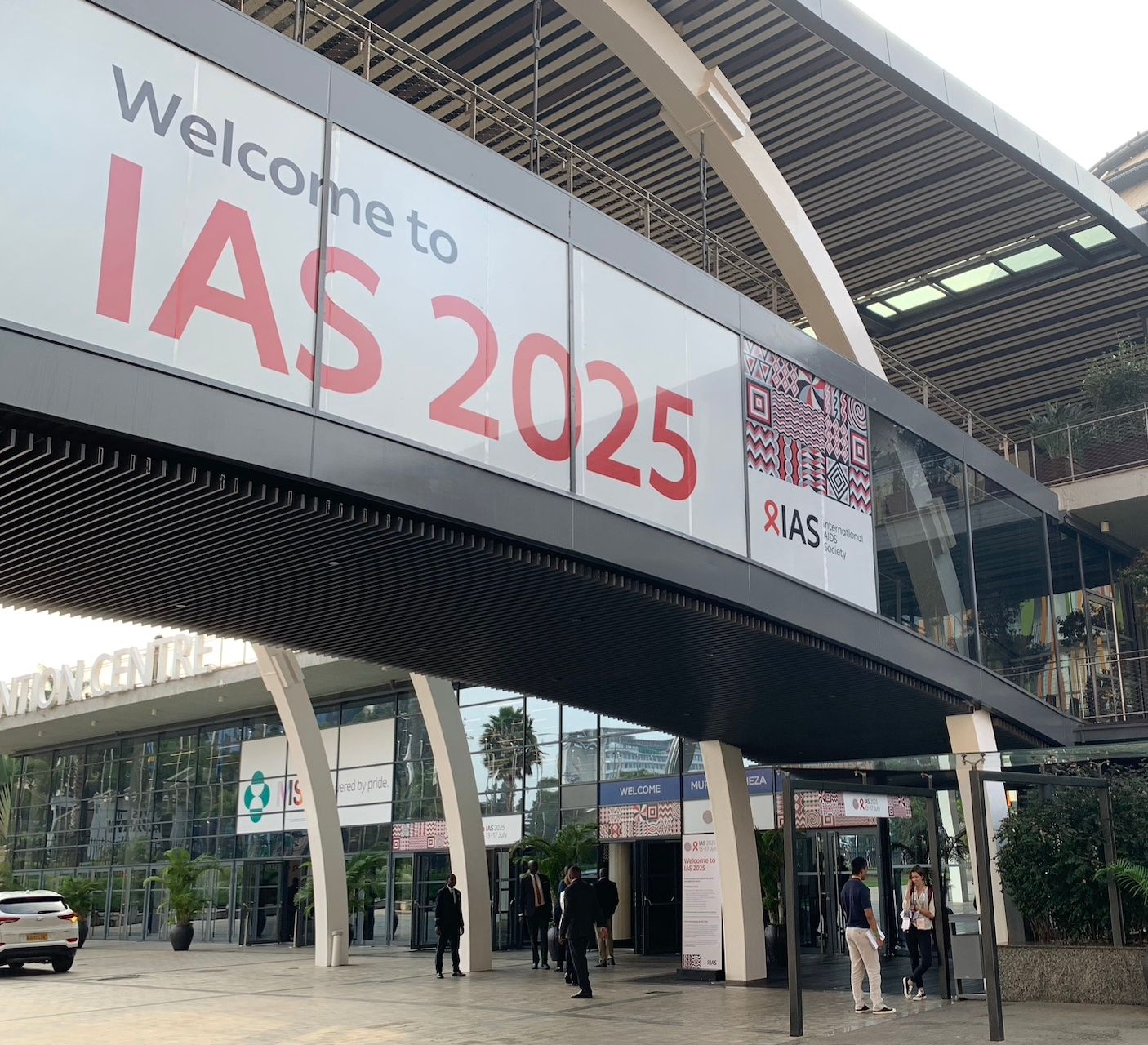One way to cope with cuts in HIV prevention funding is to continue to push to increase the number of people who self-test for HIV instead of getting tested at a clinic or hospital, experts at a series of sessions on HIV self-testing said today at the International AIDS Society (IAS) 2025 meeting in Kigali, Rwanda.
Self-testing can “help us preserve the hard-won gains across the treatment and prevention components of our programs,” said Cheryl Johnson, M.A., Ph.D., a technical officer on HIV testing services at the World Health Organization (WHO). Johnson, who spoke remotely to the session attendees, said the foundation for self-testing is strong, and “now it’s really time to act boldly to embed self-testing into routine service delivery.
Michelle Rodolph, M.S., M.P.H.
But the WHO’s message on self-testing was somewhat mixed today. After Johnson’s full-throated endorsement, supported by a raft of statistics, Michelle Rodolph, M.S., M.P.H., who is also a technical officer at WHO but in HIV prevention overall, said that self-testing was not recommended in the much anticipated WHO guidelines for twice-a-year lenacapavir injections for HIV preexposure prophylaxis that are scheduled to be released at the IAS meeting tomorrow. Instead, the guidelines strongly recommend rapid diagnostic tests.
“There wasn’t enough evidence to come up with a recommendation on HIV self-testing for long-acting injectable practice,” Rodolph said at the mid-morning session. She stressed the distinction between the lack of evidence needed for a WHO recommendation and the advisability of using self-testing as a practical matter. “I want to emphasize that HIV self-testing may be an important implementation consideration in some contexts, which should enable greater program flexibility and increase testing frequency,” said Rodolph, adding that WHO will review implementation research as the results come in and update the recommendations accordingly. “For you implementation researchers sitting in the room, this is a call and a request to all of you.”
The HIV self-testing was one of a set of topics explored in sponsored pre-conference sessions today that were held before the full-fledged conference. The sponsors of the self-testing sessions were The others included co-infections, success stories, African HIV vaccine research and “national leadership, integration, and sustainable HIV programs in an era of funding transition,” a veiled reference to the Trump administration’s pullback of funding of the U.S. President’s Emergency Plan for AIDS Relief, more commonly known as PEPFAR. In the fiscal year that ends in September 2025, the funding of PEPFAR was $.5 billion, with most of the money directed at HIV prevention and treatment in sub-Saharan Africa.
HIV self-tests test for HIV antibodies. Some involve swabbing the gums, and others, a finger prick to collect a small amount of blood. Rodolph, the WHO recommends HIV self-testing for initiation, reinitiation, and continuation of other forms of PrEP, including oral PrEP and the dapivirine vaginal ring. That recommendation also includes post-exposure prophylaxis, a short course of antiretroviral after possible exposure to HIV.
Johnson listed a wide range of benefits from HIV self-testing, including increased engagement, autonomy, access, equity and efficiency and reduced costs to health systems. She shared data showing 23 countries in Africa distributed 6.3 million HIV self-testing kits, mostly in eastern and southern Africa. Johnson said the uptake of self-testing was greater in men, including the 35-year-old to 49-year-old age group that has the largest number of undiagnosed people living with AIDS.
Johnson also discussed temporal trends, including a drop in price from $5-$40 to $1-$3 in low- and middle-income countries.
Brooke Nichols, M.Sc., Ph.D.

The session also included a presentation by Brooke Nichols, M.Sc., Ph.D., an associate professor at the Boston University School of Public Health, of a study that combined data on the effects of HIV self-testing in South Africa, Zambia, Kenya, Uganda and Lesotho. The findings shared by Nichols showed that in those countries, HIV self-testing resulted in 0.6-6 additional HIV-positive diagnoses per 100 tests distributed. Kenya, though, was the only country to show a significant effect on additional antiretroviral initiations, according to Nichols’ findings.
Johnson urged the audience to check out a poster Nichols is presenting later in the conference that shows that self-testing leads to savings and reduces the burden on healthcare facilities and staff. “We’re seeing across Africa some new work showing this [HIV self-testing] can be quite cost-effective and could be a really good opportunity when we don’t have maybe the same capacity in the health facilities that we’ve had before.”
